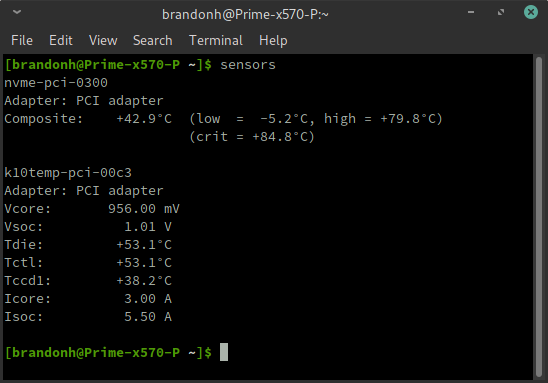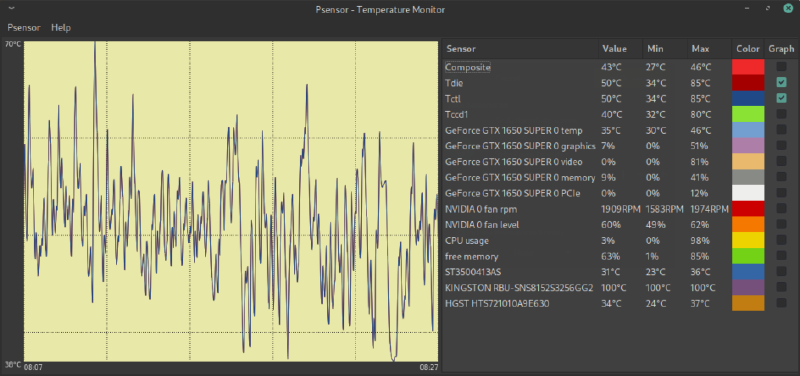This article will show you how to monitor CPU temperatures in Linux. Although the title mentions AMD processors, this will work for Intel as well. Two useful tools work for all processors and almost all Linux distributions.
What each sensor name means;
Tdie: temperature of the dies
Tctl: junction (Tj) temperature—the interface point between the die and heat spreader
Lm_Sensors#

Run Lm_Sensors with the sensors command in the terminal.
Lm_Sensors (Linux-monitoring sensors) is a wonderful command-line utility for reading CPU temperature sensors. To learn more about the functionality of lm-sensors, check out this ArchWiki page.
Install using one of the following commands in thermal.
Ubuntu#
sudo apt install lm-sensors
Debian#
sudo apt-get install lm-sensors
Arch Linux#
sudo pacman -S lm_sensors
Fedora#
sudo dnf install lm_sensors
After you install lm_sensors, run the following command to scan your system for available sensors to help you monitor CPU temps. You will need to be a root user to do this. For most Linux distributions, you will need to run the sudo -s command. If this doesn’t work, look up the command for your respective distribution.
sudo -s
Warning: Be careful what you do as a root user. You can damage your system.
sensors-detect
Psensor#

Psensor is a tool with a GUI interface that will provide more functionality when it comes to monitoring various sensors throughout your system.
monitor the temperature of the motherboard and CPU sensors
monitor the temperature of the NVidia GPUs
monitor the temperature of the hard disk drives
monitor the rotation speed of the fans
monitor CPU usage
Psensor is available in most pre-installed app store repositories.
Ubuntu/Debian#
sudo apt-get install lm-sensors hddtemp psensor




